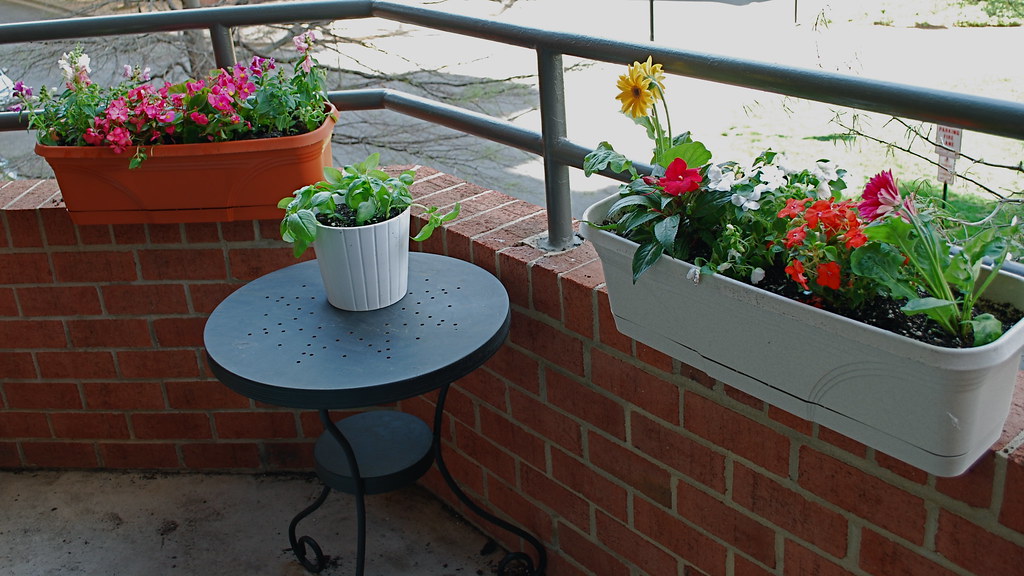You have just read a blog post written by Jason McIntosh.
If you wish, you can visit the rest of the blog, or subscribe to it via RSS. You can also find Jason on Twitter, or send him an email.
Thank you kindly for your time and attention today.
“Balcony garden” by katieharbath is licensed under CC BY-NC-SA 2.0
A two-step nutshell answer:
Post, anywhere on the web, a reply that contains a hyperlink back to the Fogknife article you are replying to.
Paste the URL of that reply into the “Suggest a new mention” box at the bottom of the relevant Fogknife article, then tap the “Submit suggestion” button.
A long-winded explanation with more options follows.
This blog welcomes direct responses to its articles, as well as public but indirect mentions of them, appending links and summaries to the relevant posts. (This post, for example, has a variety of public reaction attached.) It accomplishes this through technology known as Webmention, which works by letting the responder publish their response somewhere else on the web, and then letting Fogknife know about it, one way or another.
If you stand among the lucky few who already know how to post replies and send webmentions, great! Just do that, however you do it. When you want to post a reply (or a like, or a repost), any Fogknife article’s URL should work as a webmention target, and the right things will happen upon receipt.
Otherwise, you can comment via any of these methods:
Reply to the post on Twitter. Many posts on Fogknife end with a hyperlink reading “Share or reply to this post on Twitter”. This leads to the post’s “official” tweet, which links back in turn to Fogknife. If you “like”, retweet, or respond to this tweet on Twitter, then your activity will show up as a like, a repost, or a reply on the Fogknife article. (It may take a few hours to happen.)
This magic occurs by way of Bridgy, whose maintainers have my gratitude for their impressive and inspirational work.
Create a reply with Comment Parade. An experimental but nifty service by Christian Weiske that will host comments and send webmentions for you. Go to the main page, plug in the URL of the specific Fogknife article you’d like to reply to, and follow the prompts from there. (For this simple purpose, you may disregard the language about IndieAuth endpoints and logins.)
Publish a response anywhere you want, and then tell Fogknife about it. Every Fogknife article-page ends with a simple form labeled “Suggest a new mention”, comprising a single text-field. If you plug in the URL of a page anywhere on the public internet that itself contains a hyperlink to the Fogknife article in question, then Fogknife will create the appropriate webmention.
So, you can write something on your own blog, or on a service like Mastodon, or even just publish a stand-alone webpage that responds to the post, and then come back to the Fogknife post and share it. So long as it links to that post, the article should treat it as a comment.
Advanced technique: If you take this latter path, you may wish to try marking up your article with microformats that identify it specifically as a response to the Fogknife article, and not merely an article that happens to mention it. These microformats can also contain information about you, the response’s author, and a separate summary of your response (if it’s on the longer side).
This article by Aaron Parecki can teach you how that works. When you’re done, plug your page’s URL into the Fogknife article’s form, as described above.
And then if you find yourself intrigued by seeing all that Webmention magic at work, do feel free to follow the links at the end of Aaron’s article to dive deeper into the topic, as well as the wider world of the IndieWeb.
To share a response that links to this page from somewhere else on the web, paste its URL here.